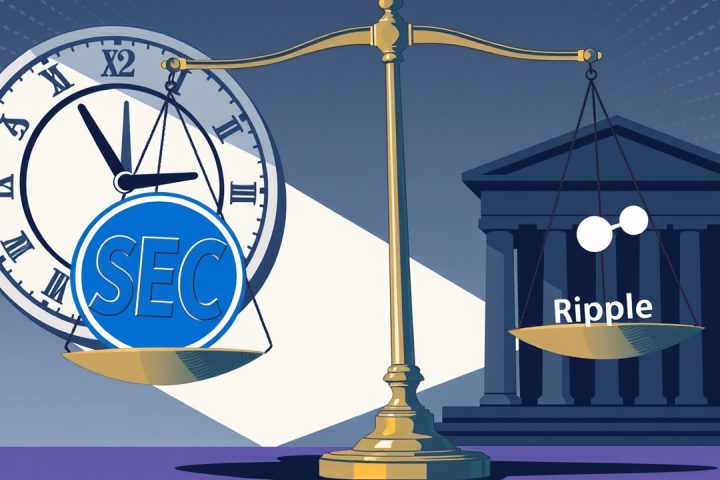The Rise of Stablecoins
The adoption of stablecoins received a significant impetus earlier this year with the signing of the GENIUS Act by former US President Donald Trump. As a result, European banks are now eyeing the potential of launching their own stablecoins, showcasing their desire to compete with the unwavering dominance of the US dollar. This long-standing dominance underpins American economic strength and has intensified following the enactment of the GENIUS Act, which has led to a remarkable increase in the popularity of dollar-backed stablecoins, presenting a pivotal opportunity for the United States to further consolidate its economic power.
Benefits of Stablecoins
By fostering an ecosystem conducive to stablecoins within the established US banking framework, the country can not only uphold the dollar’s status as the world’s primary reserve currency but also enhance financial accessibility, particularly in underbanked regions across the globe. The advantages of these digital currencies are multifold: they reduce transaction costs, expedite settlement periods, combat local inflation, and provide trade and financial access to smaller businesses often neglected by traditional banking practices.
Market Growth and Demand
The market for stablecoins has skyrocketed, achieving a remarkable $265 billion in transactions, predominantly associated with US dollars. Each stablecoin is secured by significant reserves of US currency and Treasury bonds, effectively reallocating Treasury bill holdings from conventional banking into the hands of stablecoin issuers. Accordingly, increasing stablecoin transactions will likely drive up the demand for US dollars and government debt, as Federal Reserve Governor Christopher Waller pointed out. He emphasized that regulatory flexibility towards stablecoins could further entrench the dollar’s position in global finance.
Impact on Developing Nations
This digital currency revolution holds special promise for developing nations, where populations often grapple with volatile currencies and unreliable banking systems. Many citizens in these countries resort to dollarization to shield their wealth but have encountered hurdles associated with cash transactions and high remittance costs. The introduction of stablecoins offers a transformative solution, granting immediate digital access to the dollar through smartphones, thus bypassing typical banking hurdles.
In regions like Sub-Saharan Africa, the utility of dollar stablecoins is undeniable, becoming a vital resource for trade and savings amidst currency fluctuations. Research indicates that over 40% of African cryptocurrency transactions now involve stablecoins, with users often paying a premium, sometimes exceeding 5%, to acquire these digital dollars—evidence of the strong demand for a dependable store of value.
Cost Reduction and Economic Benefits
Stablecoins also dramatically lower the costs of sending remittances, an economic lifeline for many families in developing countries, who paid nearly 8% in fees through traditional channels. In one notable Kenyan initiative, the use of stablecoins for micropayments shrank costs from 28.8% to a mere 2%, ensuring that gig workers retain more of their earnings. Industry analysts estimate that transitioning from traditional wire transfers to stablecoins could save over $12 billion in remittance fees annually, benefiting local economies significantly.
Bridging the Credit Gap
Moreover, in a landscape where local banks may be hesitant to lend, stablecoin-based solutions and decentralized finance have the potential to bridge the credit gap, empowering small and medium enterprises to flourish. Furthermore, the widespread adoption of stablecoins could offer developing nations an alternative to predatory lending practices from countries like China, known for imposing onerous loans linking funds to strategic asset control through methods such as debt-trap diplomacy.
Exploring Tokenized Bonds and CBDCs
Additionally, countries like Kenya and Brazil are beginning to explore tokenized government bonds. By issuing smaller-denomination bonds on blockchain networks, these nations can engage local investors and reduce reliance on heavyweight foreign creditors, potentially alleviating their debt burdens.
At the same time, central banks are exploring central bank digital currencies (CBDCs) as state-sanctioned alternatives to private stablecoins. However, early implementations like Nigeria’s eNaira have struggled to gain traction, with the majority of users abandoning their wallets due to limited functionality. This trend emphasizes that while CBDCs may be government initiatives, stablecoins tend to succeed by serving the real needs of users. Academic studies have shown that introducing CBDCs does not notably impact macroeconomic indicators and may hinder innovation in consumer services.
Conclusion
In conclusion, encouraging the use of dollar-backed stablecoins stands to reinforce the US dollar as a leading reserve currency while providing developing nations with greater economic opportunities, enhanced financial access, and lower transaction expenses. Amid increasing geopolitical tensions, digital dollars could facilitate a fairer, more resilient global financial system. By championing stablecoins, the United States can not only stimulate growth in emerging markets but also fortify its own economic resilience in the evolving financial landscape.




